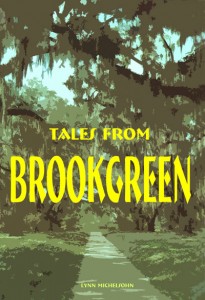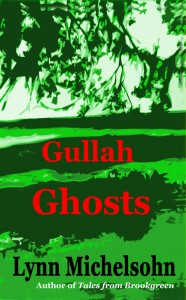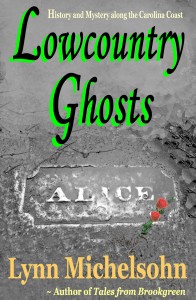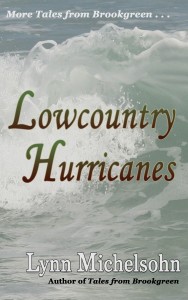Transporting Rice, Cotton, and Naval Stores to Confederate Blockade Runners at Murrells Inlet, South Carolina
[A selection from Tales from Brookgreen]

Paperback $12.95 (US).
Available from these booksellers.
Hostess Corrie Dusenbury of Brookgreen Gardens, Murrells Inlet, South Carolina, explained this local history to 1950s visitors . . .
The trade routes for vital commodities headed to or from the Confederate blockade runners at Murrells Inlet during the War Between the States developed into long, intricate, and often arduous pathways. Wachesaw Landing on the Waccamaw River just across the Waccamaw Neck from Murrells Inlet became the gathering point for goods from all over this part of the state.
Rice produced on plantations along the lower Waccamaw River was loaded onto flats and rowed or poled upstream to Wachesaw Landing. Rice from plantations along the lower Pee Dee River was loaded onto flats that were first floated down the Pee Dee to Winyah Bay, then rowed over to the mouth of the Waccamaw, and from there rowed or poled upstream to Wachesaw Landing. These were simple routes but ones that required substantial effort.

Paperback $5.95 (US).
Available from these booksellers.
Flats loaded with timber or naval stores, such as pitch and tar, from the upper Waccamaw River floated downriver to Wachesaw Landing directly and much more easily. Flats carrying the same materials from the upper Pee Dee River took an equally easy but more complicated route. First they floated 50, 60, or 70 miles down the Pee Dee River to just past where it enters Georgetown County. At that point, the Pee Dee and the Waccamaw Rivers begin to flow parallel to each other only a mile or so apart for their remaining fifteen miles until they empty into Winyah Bay near Georgetown. Several small creeks criss cross the swamps between them interconnecting the two rivers in an intricate web.

Paperback $7.95 (US).
Available from these booksellers.
Twisty turney Bull Creek actually carries a substantial amount of water from the Pee Dee River through the cypress swamps and into the Waccamaw River at Longwood Plantation (once owned by my Cousin Jack Green, but that’s another story). So flats and barges loaded with timber and naval stores that had floated down from the upper Pee Dee River could easily cut across through Bull Creek over to the Waccamaw River, and then float on down the Waccamaw River the rest of the way to Wachesaw Landing.
Cotton from inland plantations in South Carolina took an even more elaborate route. First it traveled by railroad car from inland gathering points to a railroad bridge over the upper Pee Dee River near Cheraw, South Carolina. There it was transferred from railroad cars to river flats and barges. Then the cotton floated the sixty miles down the Pee Dee River to the Bull Creek cut off, floated through the swamps on Bull Creek over to the Waccamaw River, then continued on down the Waccamaw River to Wachesaw Landing.

Paperback $7.95 (US).
Available from these booksellers.
So by all these routes, cotton from inland plantations, naval stores and timber from the upper Waccamaw and Pee Dee Rivers, and rice from the lower Waccamaw and Pee Dee Rivers all converged on Wachesaw Landing. At Wachesaw Landing workers unloaded all this cargo from river flats and barges and piled it onto ox-drawn wagons, that carried it the three miles across the Waccamaw Neck to Murrells Inlet.
At Murrells Inlet the various cargoes were loaded onto ocean going schooners, which ran the blockade and headed for Europe or the Caribbean. There their captains sold the valuable cotton, rice, naval stores, and timber. They used the money to purchase even more precious weapons and medicines vital to the Confederacy.

Available from these booksellers
The captains then ran their ships back through the Union blockade to bring these precious goods into Murrells Inlet. There, workers transferred this cargo from ships to the ox-drawn wagons and carted it across the Waccamaw Neck to Wachesaw Landing. From there the goods traveled on to their final destinations, following the original complex pathways, but in reverse.
Copyright 2004 by Lynn Michelsohn
To learn more about Lowcountry history and culture, read . . .

Paperback $12.95 (US).
Available from these booksellers.
